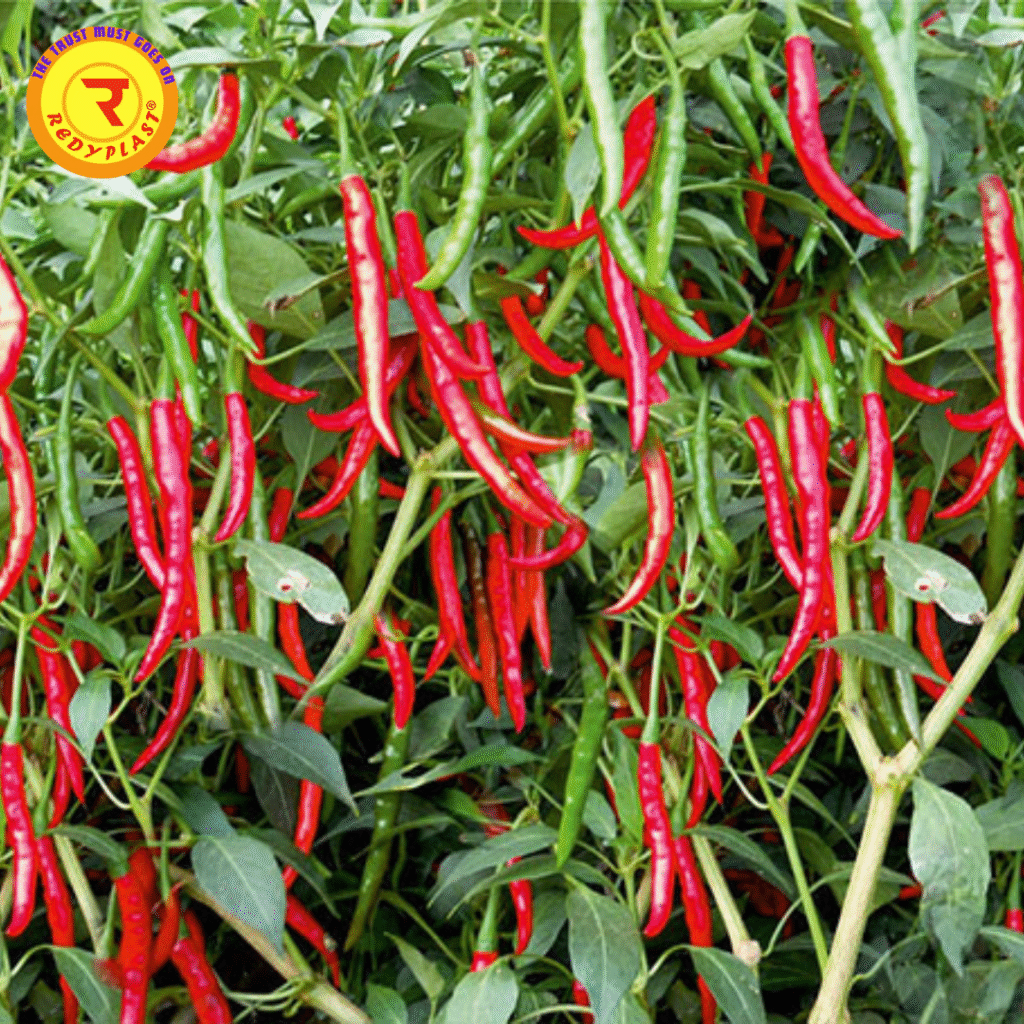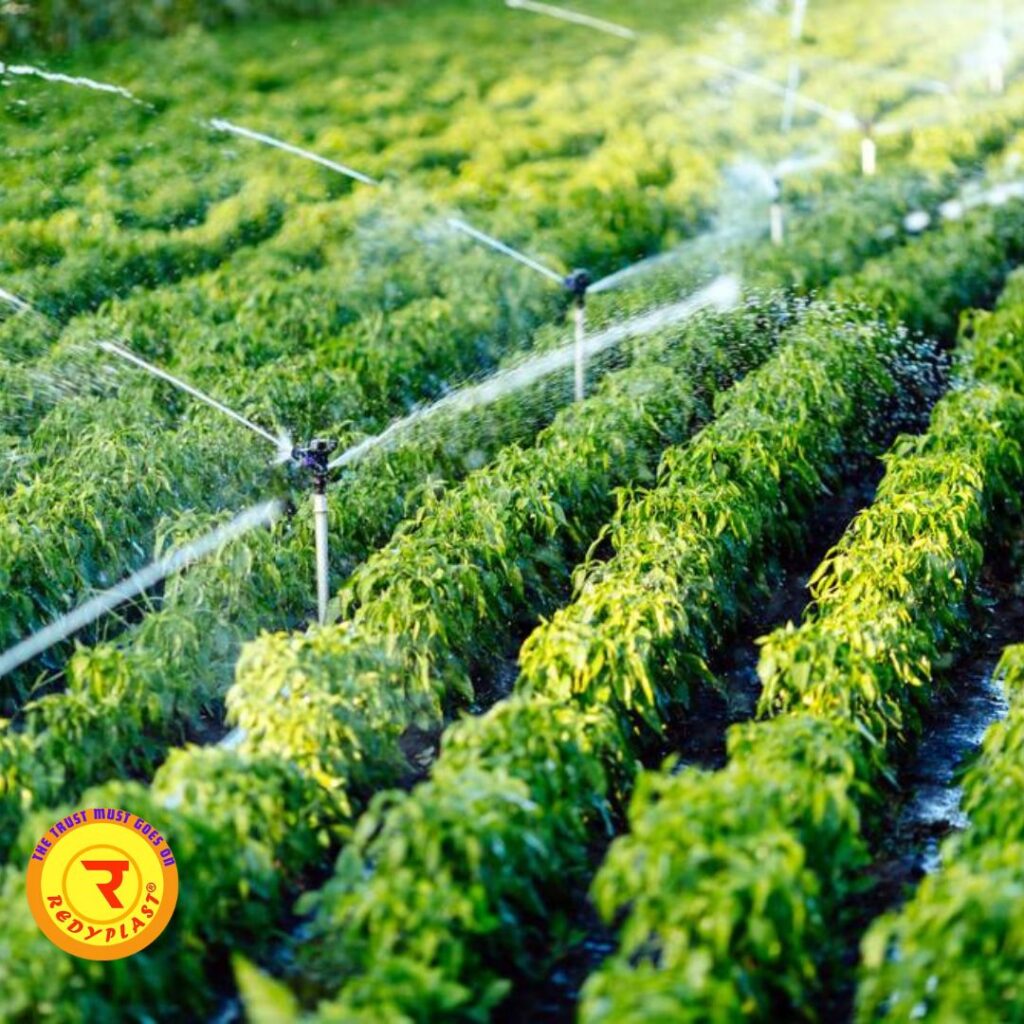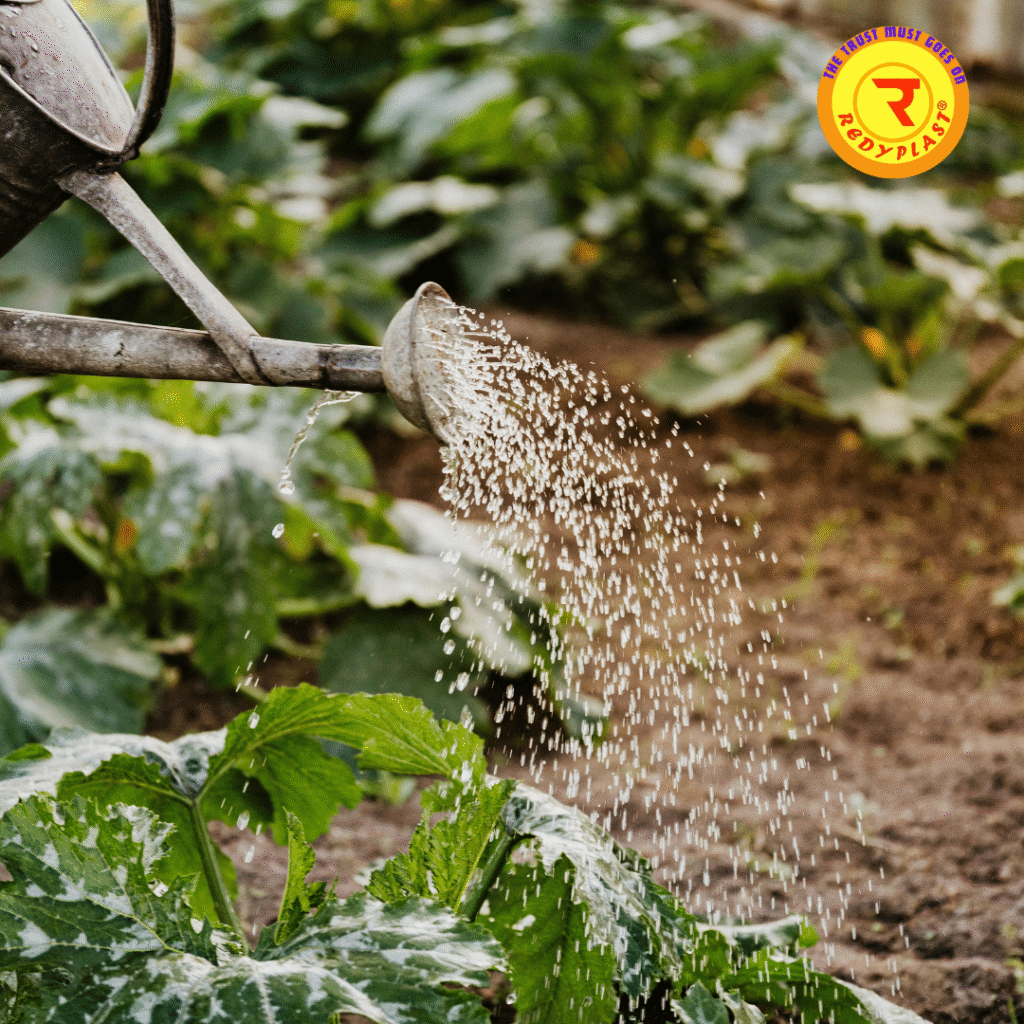Currently Empty: ₹0.00
Best Irrigation for Chilli Farming Andhra Pradesh: Which System Works Best?
Chilli farming is one of the most profitable agricultural ventures in Andhra Pradesh, contributing significantly to both local consumption and exports. With its growing demand in India and abroad, farmers are increasingly focusing on improving yields and crop quality. However, the key to achieving healthy plants, premium-quality fruits, and higher productivity lies in proper irrigation.
Choosing the best irrigation for chilli farming Andhra Pradesh is essential not only for saving water but also for ensuring that chilli plants receive consistent moisture, nutrients, and support throughout their growth cycle. In this blog, we will guide farmers on the most effective irrigation systems, best practices, and tips to maximize chilli yield in Andhra Pradesh.

Why Choosing the Right Irrigation Matters
Water is the lifeline of agriculture, and chilli farming is no exception. Both over-irrigation and under-irrigation can negatively impact plant health, fruit development, and overall yield. Selecting the best irrigation for chilli farming Andhra Pradesh offers several advantages:
- Consistent Soil Moisture: Chilli plants require a steady supply of water, especially during flowering and fruiting stages. Proper irrigation ensures roots receive adequate moisture without waterlogging.
- Efficient Use of Water Resources: Andhra Pradesh often faces seasonal water scarcity. Using the right irrigation system ensures water is not wasted, reducing costs and conserving resources.
- Reduced Risk of Plant Diseases: Excess water on leaves or soil can promote fungal and bacterial infections. Controlled irrigation keeps plants healthy and disease-free.
- Enhanced Nutrient Absorption: Water acts as a medium for nutrient uptake. Efficient irrigation ensures that fertilizers and micronutrients reach the plant roots effectively, leading to better growth and higher yields.
By focusing on the best irrigation for chilli farming Andhra Pradesh, farmers can ensure sustainable and profitable cultivation while maintaining soil health and resource efficiency.
Top Irrigation Systems for Chilli Farming in Andhra Pradesh
Selecting the right irrigation system depends on farm size, budget, and soil type. Here are the most effective options recommended for chilli cultivation:
1. Drip Irrigation System
Drip irrigation is widely regarded as the most efficient system for chilli farming. It involves a network of pipes, valves, and emitters that deliver water directly to the plant roots. This method minimizes water loss through evaporation and runoff while maintaining optimal soil moisture.
Key Benefits of Drip Irrigation:
- Saves 30–50% water compared to traditional flood or furrow irrigation
- Reduces weed growth by limiting water to the root zone
- Prevents fungal diseases by keeping leaves dry
- Ensures uniform growth and higher yields

Drip irrigation is often considered the best irrigation for chilli farming Andhra Pradesh due to its water efficiency, ability to support fertigation, and consistent results in chilli productivity. Farmers can also automate the system to save labor and time, making it ideal for medium to large-scale farms.
Practical Tip:
Install pressure regulators and filters to ensure uniform water distribution. Combine drip irrigation with mulching to further reduce evaporation and maintain soil moisture.
2. Sprinkler Irrigation System
Sprinkler irrigation simulates natural rainfall, distributing water evenly across the farm using overhead sprinklers. It is suitable for fields with varying topography and soil types.
Advantages of Sprinkler Irrigation:
- Covers large areas efficiently
- Can be used for fertigation with water-soluble fertilizers
- Flexible for different soil conditions
However, excessive water on leaves may increase the risk of fungal infections, so it’s essential to adjust watering schedules, especially during high humidity or rainy periods.
Sprinkler irrigation is considered a viable alternative for farmers looking for the best irrigation for chilli farming Andhra Pradesh on moderately large farms where drip systems may be cost-prohibitive.
3. Furrow Irrigation
Furrow irrigation is a traditional method where shallow channels are created between plant rows to direct water flow. Though less efficient than drip or sprinkler systems, it is still practiced by many farmers due to its simplicity and low investment.
Advantages:
- Simple to set up and maintain
- Affordable for small-scale farmers
- Can be adapted to sloping fields
Limitations:
- Higher water usage compared to drip systems
- Uneven water distribution if not monitored
- Risk of waterlogging if furrows are poorly designed
Furrow irrigation can be used as a temporary solution for those seeking the best irrigation for chilli farming Andhra Pradesh within a limited budget. Careful monitoring is required to avoid water wastage and root damage.
4. Manual Watering
Manual watering using hoses or watering cans is suitable for small plots or home gardens. While labor-intensive, it provides precise control over the water applied to each plant.
Advantages:
- Ideal for experimental or small-scale chilli farms
- Allows accurate water delivery
- Can adjust water supply according to plant growth stage
Limitations:
- Labor-intensive and time-consuming
- Not suitable for large-scale farms
Manual irrigation is effective when combined with mulching and regular soil moisture checks. It can be a practical choice for home gardeners seeking the best irrigation for chilli farming Andhra Pradesh on a smaller scale.

Tips for Efficient Irrigation in Chilli Farming
To maximize the benefits of the best irrigation for chilli farming Andhra Pradesh, follow these practical tips:
- Monitor Soil Moisture: Use soil moisture meters to track water availability and avoid over-irrigation.
- Avoid Waterlogging: Excess water can damage roots and increase susceptibility to fungal diseases.
- Use Mulching: Organic mulches like straw or dried leaves reduce evaporation, maintain soil temperature, and improve soil health.
- Schedule Irrigation Based on Growth Stage:
- Seedling stage: Moderate water
- Flowering and fruiting stage: Regular and adequate water
- Pre-harvest stage: Reduce water slightly to improve fruit quality
By implementing these practices, farmers can maximize efficiency and make the most out of the best irrigation for chilli farming Andhra Pradesh.
How to Choose the Best System for Your Farm
Choosing the right irrigation system depends on several factors:
- Farm Size: Drip systems are ideal for medium to large farms, while manual or furrow irrigation suits smaller plots.
- Budget: Drip irrigation has higher initial costs but provides long-term savings and higher yield.
- Soil Type: Sandy soils require more frequent irrigation, making drip systems ideal. Clay soils retain water longer and may work with sprinkler or furrow systems.
- Labor Availability: Automated systems reduce labor, while manual watering demands more hands-on work.
By evaluating these factors, farmers can select the best irrigation for chilli farming Andhra Pradesh that balances cost, efficiency, and productivity.
Conclusion
Selecting the best irrigation for chilli farming Andhra Pradesh is crucial for achieving high yields, healthy plants, and sustainable water use. Among all methods, drip irrigation emerges as the most efficient and yield-friendly system, offering precise water delivery, disease control, and resource savings. Sprinkler, furrow, and manual irrigation systems can also be used based on farm size, budget, and local conditions.
Farmers who implement the best irrigation for chilli farming Andhra Pradesh can enjoy improved crop quality, higher returns, and more sustainable farming practices.
